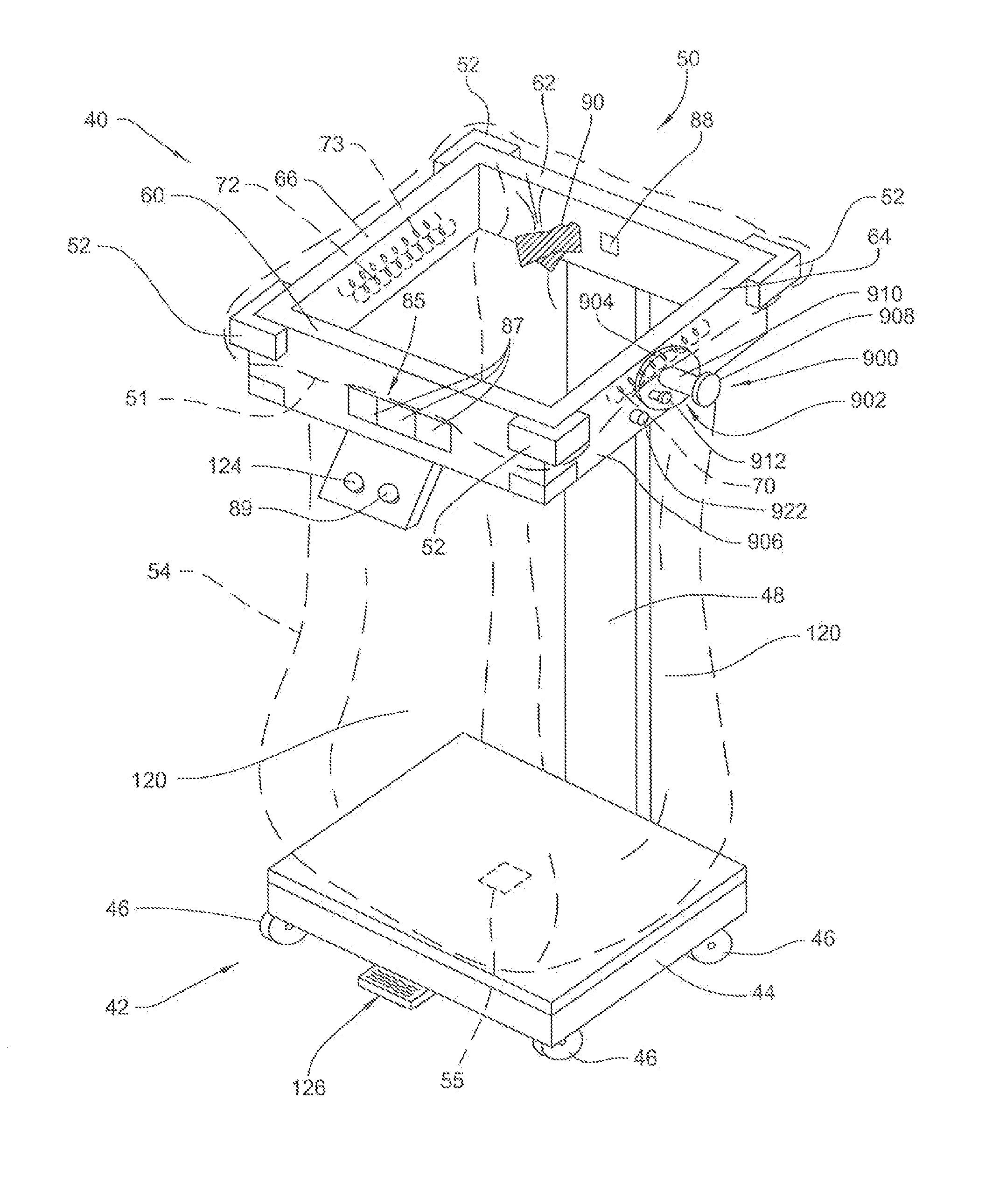Waste collection system for collecting solid medical waste including metal detection, pre-detection apparatus, and/or bag- tensioning mechanism
a technology for collecting and temporarily storing medical waste, applied in the field of waste collection system for collecting and temporarily storing solid medical waste, can solve the problems of increased budgets for purchasing lost reusable equipment, increased chances of reusable medical equipment entering the waste stream, and inability to meet the needs of patients
- Summary
- Abstract
- Description
- Claims
- Application Information
AI Technical Summary
Benefits of technology
Problems solved by technology
Method used
Image
Examples
Embodiment Construction
[0042]Referring to the Figures, wherein like numerals indicate like or corresponding parts throughout the several views, a solid medical waste collection system is generally shown at 40 in FIG. 1. The system is particularly adapted for collecting solid medical waste during medical or surgical procedures, but is not limited to this purpose. Such waste may include: (1) conventional trash; (2) used linens, towels and sheets; (3) solid articles coated or exposed to bodily fluids; (4) and radioactive waste.
[0043]Referring to FIG. 1, the system 40 comprises a cart 42 with a planar base 44. Casters 46 are mounted to a bottom of the base 44 to provide the cart 42 with mobility. A rectangular leg 48 extends upwardly from one side of the base 44. The leg 48 suspends an open rectangular frame 50 above the base 44.
[0044]The frame 50 is formed from plastic or other material that does not effect the transmission of electromagnetic waves. The frame 50 comprises front 60 and rear 62 webs and front-...
PUM
 Login to View More
Login to View More Abstract
Description
Claims
Application Information
 Login to View More
Login to View More - R&D
- Intellectual Property
- Life Sciences
- Materials
- Tech Scout
- Unparalleled Data Quality
- Higher Quality Content
- 60% Fewer Hallucinations
Browse by: Latest US Patents, China's latest patents, Technical Efficacy Thesaurus, Application Domain, Technology Topic, Popular Technical Reports.
© 2025 PatSnap. All rights reserved.Legal|Privacy policy|Modern Slavery Act Transparency Statement|Sitemap|About US| Contact US: help@patsnap.com



